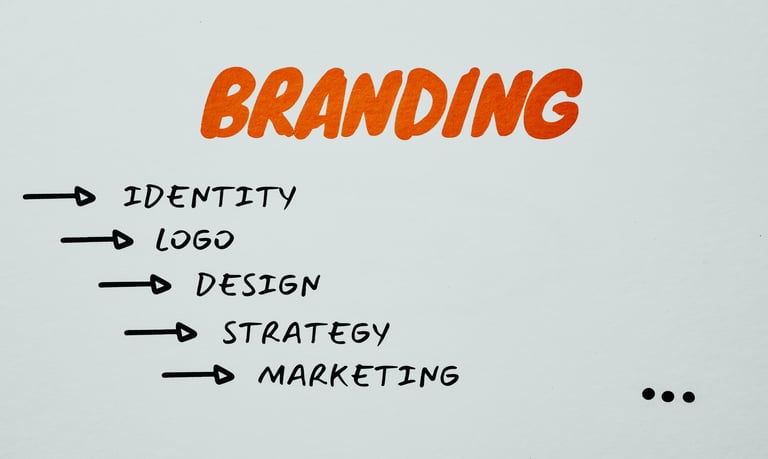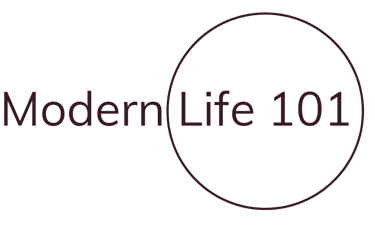Small Business Ownership: Branding & Identity
JOBS & BUSINESS


“A brand is the set of expectations, memories, stories and relationships that, taken together, account for a consumer’s decision to choose one product or service over another.”
- Seth Godin -
To compete, small businesses must create and cultivate emotional connections with their audiences through messaging, marketing, and engagement. Your brand is your most valuable asset, and when done correctly, the benefits are measurable and immediate. Your brand identity consists of much more than just your logo, more than just style guides, marketing materials, and color palettes. Your brand identity is the sum of how your company looks, feels, and communicates with customers. It has an impact on the entire customer experience and, as a result, how others perceive your credibility and business.
Your brand identity is the image you want your customers to have of you. It begins with the name you choose for your brand and progresses to the tone of voice you use when communicating with them. This results in positive brand associations. Brand identity is distinct from brand image. The former refers to the visual elements that shape a brand, such as logos, icons, symbols, fonts, and language. All of these elements combine to form an image in the minds of customers, which influences how they perceive a brand.
Differentiation, a distinct personality, and consistency are critical components of brand identity. In terms of the final component, ensuring consistency means creating a solid image in the minds of your customers. This significantly strengthens your connection with your audience. Nike and Coca-Cola are two examples of brand identities. Nike's swoosh logo has become synonymous with the company. Customers recognize the symbol even though the company does not display the brand name on some marketing and branding collateral. Coca-Cola is another example, having established a memorable brand identity for 130 years. The bright white and red colors stand out, especially when combined with the brand's distinctive typography. Coca-Cola has a secondary branding symbol, as polar bears have appeared sporadically in their ad campaigns since the 90’s. Having more than one branding image, such as both a logo, unique typography (the Star Wars Franchise takes full advantage of branding typography) and a mascot, is a great way to further spread the message and values of your brand.
The fun begins once the research phase is completed. It's time to put on your creative cap and come up with some branding images - logos, color themes, typography, and other branding assets that will differentiate your business from the competitors. Once you've delved deeper into asset creation for marketing campaigns, the 3 Cs of marketing (create, capture, and convert) can also be useful. Types of branding assets include: Color palettes, Logos, Typography, Iconography, Graphic design and photography for marketing campaigns, Themes, Musical Themes or Sounds, and A style guide that explains, among other things, proper logo usage, tone of voice, branding statements or catch-phrases.
Brand assets enable you to create instantly recognizable customer touchpoints, even if it is not part of your official logo. Consider Amazon's packaging, Pixar's lamp, or Apple's minimalist and gently rounded design. However, branding assets are more than just logos and slogans. They are a synthesis of several elements that come together to form a distinct, distinguishable identity. Brand assets, when well-designed, can raise brand awareness, increase marketing ROI, foster customer loyalty, and provide a competitive advantage in the market.
A logo is the most visible representation of a company. According to research, when information is paired with a relevant image, people retain it better, and a logo is what helps customers recognize your brand and begin to build an emotional connection. Color can account for up to 90% of an initial impression. Given that people form opinions about people or products within the first 90 seconds of meeting them, it's easy to see why a color palette is a valuable brand asset. When selecting colors, consider color psychology to see what will resonate most with your target audience.
There’s also the tagline to consider. "Just do it," or "What's in your wallet?" are two well-known taglines. When combined with a specific logo and color palette, a catchy slogan can be a powerful brand asset for unifying marketing campaigns and making your company a household name. Creating a musical tagline works too (consider the McDonalds jingle - short series of notes followed by their tag line “I’m loving it”) and consider all of the jingles you recall from your childhood. A tune can become an earworm, and having the ability to be remembered by the public is the whole point of branding strategy. Consider the three Cs of branding and how they can help you as you build your brand assets:
Clarity: It is your responsibility, not your customer's, to determine your message. If they have to work to understand what you've created, your brand isn't yet clear enough.
Consistency: Your billboard should have the same tone as your website, which should have the same tone as your Twitter account. Why? Your brand's consistency instills confidence and discipline.
Commitment: It's normal to want our ads to go viral, and when they don't, we get discouraged and change our strategy. Keep in mind that great branding takes time.
With a brand story, you can solidify your brand's identity. This isn't necessarily your origin story, though it will include details about why you started your company. A compelling brand story is at the heart of every great brand, and defines and describes what matters most to a company. It is used to communicate a company's values to the public and can also help guide major organizational decisions. Brand stories are concise summaries of a company's vision, mission, and core values. Many businesses draw inspiration from brand archetypes, and the best brand stories inject their own personality into the mix. The goal of your brand story should be to answer the following questions:
What does your brand stand for?
What problems does your product or service solve?
How does your company address these issues?
Why does your company exist - and why is it going to help the customer?
Where do you see your company in the future, what are its aspirations?
Remember that your brand story is more than just the elevator pitch you give people when they ask what your company is about. It's all about how your brand connects with people and why it exists.
Whether you hire a brand consultant or do everything in-house, it's one thing to invest the time, energy, and resources necessary to build a brand, but it's quite another to understand what customers truly think about it and your company. There is a simple, free way to hear the true voice of your current and potential customers: social media. Every day, millions of conversations take place on social media, and you have the opportunity to help define, build, and – if necessary – defend your brand with a simple post. Here are some key social media listening tools and strategies to assist you in identifying and listening in on those conversations, monitoring the internet and social media for brand mentions, and engaging when the opportunity presents itself. The first step is to Identify relevant keywords and phrases to search for conversations taking place in your industry or directly related to your business. Below are some resources to help you keep tabs on your brand image.
Google Trends is an excellent tool for determining which keywords people use more frequently than others, as well as finding related search terms and overall geographic interest. Try entering keywords related to your industry, brand name, and products or services you provide to see which ones are most frequently searched for. This can assist you in tailoring your content strategy, sales promotions, and email blasts to focus on the keywords that people are actually searching for.
Buzzsumo is used to find influencers to promote your content or to see what keywords your competitors are currently ranking for.
Google Alerts is an excellent social media listening tool for busy entrepreneurs who may not have the time to monitor their brand's social media presence. Google Alerts will send you an email whenever one of the search terms you've specified is mentioned. You can customize the frequency of these updates as well.
Brand Mention is a hidden gem among social media listening tools, allowing you to search for keywords and see overall frequency, sentiment, influencers, sources, and reach. This snapshot provides a wealth of information about the health of your company's online presence and allows you to export the data for your own records or to analyze in Excel. With the sentiment rank, you can see how customers feel about your brand and listen for negative mentions so you can help alleviate the situation.
Mention is similar to Google Alerts in that it allows you to create an alert, but it aggregates all of this data into a large feed, assigns a sentiment score to each mention, and identifies important mentions that require action. Mention also collects data from millions of sources to provide a snapshot of your entire internet presence.
Hootsuite offers simple feeds that display all of your social networks on one screen; you can easily listen in on your Facebook page, monitor Twitter mentions, hashtags, and keyword searches, and follow influencer tweets all in one view. The true power of Hootsuite lies in its listening and search capabilities. When you set up a search in Hootsuite for a hashtag or keyword, you can see every tweet that contains that keyword as well as who is sharing it.
Your customer's true voice can be found on social media. It is typically unfiltered, unbridled, and unrestrained (for better or worse), so don't pass up daily opportunities to assist your customers and your brand.
“A brand is no longer what we tell the consumer it is — it is what consumers tell each other it is.”
– Scott Cook -
“A great brand is a story that’s never completely told. A brand is a metaphorical story that connects with something very deep – a fundamental appreciation of mythology. Stories create the emotional context people need to locate themselves in a larger experience.”
– Scott Bedbury -
